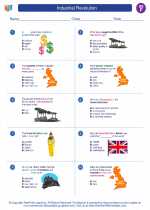Natural Boundaries
Natural boundaries are geographical features that separate and define the borders of a country or territory. These boundaries are created by natural elements such as rivers, mountains, and oceans. Unlike artificial boundaries, which are established by humans, natural boundaries are formed by the physical landscape and have often been used historically to demarcate the borders of nations.
Natural boundaries can provide a sense of security and protection for a country, as they are often difficult to cross or overcome. Additionally, they can also play a significant role in shaping the cultural, economic, and political development of a region, as they can influence trade routes, access to resources, and the movement of people.
Study Guide: Natural Boundaries
- What are natural boundaries?
- How do natural boundaries differ from artificial boundaries?
- What role do natural boundaries play in the development of a region?
- Can you provide examples of natural boundaries?
Natural boundaries are geographical features that separate and define the borders of a country or territory. These boundaries are created by natural elements such as rivers, mountains, and oceans.
Natural boundaries are formed by the physical landscape, while artificial boundaries are established by humans, often through treaties or agreements.
Natural boundaries can influence trade routes, access to resources, and the movement of people, shaping the cultural, economic, and political development of a region.
Examples of natural boundaries include the Rio Grande River separating the United States and Mexico, the Himalayas separating the Indian subcontinent from the rest of Asia, and the Mediterranean Sea serving as a natural boundary for several European countries.
Understanding natural boundaries is important for comprehending the historical and contemporary geopolitical landscape of the world, as well as the impact of geography on human societies and interactions.
[Natural Boundaries] Related Worksheets and Study Guides:
.◂Social Studies Worksheets and Study Guides Sixth Grade. Industrial Revolution

 Worksheet/Answer key
Worksheet/Answer key
 Worksheet/Answer key
Worksheet/Answer key
 Worksheet/Answer key
Worksheet/Answer key
 Worksheet/Answer key
Worksheet/Answer key
